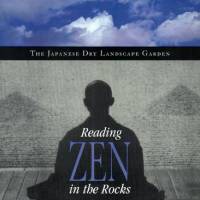The powerful ambiguities of dry landscape arrangements, the inevitable questions they raise in relation to what constitutes a garden, the profundity of concepts and principals, many of them deriving from Taoism and Zen, never fail to baffle the uninitiated. Francoise Berthier, a professor of Japanese art and history, is singularly well qualified to explore the links between the aesthetics of the garden, its compositional elements, and the search for truth and enlightenment that the more accomplished and urbane landscape arrangements serve.
Reading Zen in the Rocks, by Francois Berthier, Translated by Graham Parkes.
179 pages
University Of Chicago Press, Nonfiction.
Reflecting the lapidary art of color-renouncing Song Dynasty landscape painting, early Zen-influenced stone installations represented "a new genre of garden exemplifying a kind of austere humanism." After outlining the history of landscape design in Japan, the author proceeds to decipher the language of the garden by focusing on the much-scrutinized Ryoanji Temple garden in Kyoto.
Superficial contact with Japanese rock gardens has ensured they remain enigmatic, but in this elegantly written study, Berthier demonstrates how the gardens, expressions of tested design principals, are anything but abstract.
It's interesting to ponder the irony that, in comparison with the great gardens of England and France, whose trees, plantings and horticultural components have been subject to change and decay, an overwhelming number of Japanese dry landscapes, mirroring a philosophy keenly aware of impermanence, have survived intact.
Read archived reviews of Japanese classics at jtimes.jp/essential.

















With your current subscription plan you can comment on stories. However, before writing your first comment, please create a display name in the Profile section of your subscriber account page.